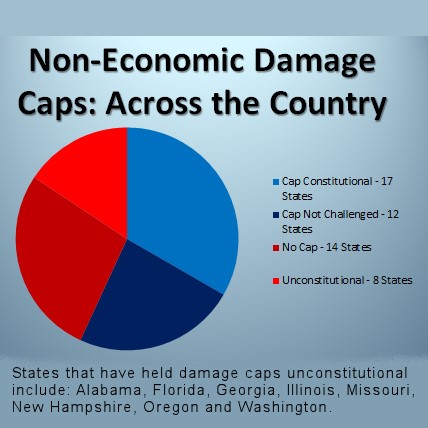Are Caps on Medical Malpractice Damages Unconstitutional?
Over the years, states have passed laws limiting or “capping” the non-economic damages that can be awarded to a medical malpractice plaintiff. Insurance companies, hospitals, and physicians claim these laws keep down the cost of medical malpractice insurance and the cost of practicing medicine in general. But patient advocates argue the caps do not accomplish either of these goals, and instead deny fair compensation to victims of malpractice.
The question has now become whether these caps violate the Constitutions of the states that have enacted them.
This issue has been hotly debated over the years, fueled most recently by a decision from a Florida appellate court, which held that it is unlawful for states to limit how much persons injured by the negligence of a doctor or hospital can recover for their pain and suffering.
A plaintiff who files a medical malpractice lawsuit can ask for both economic and non-economic damages. Economic damages, like hospital bills, are straightforward because they represent the plaintiff’s out-of-pocket costs. But non-economic damages can be trickier to calculate because they compensate an injured plaintiff for non-monetary losses, like pain and suffering, mental anguish, and loss of enjoyment of life.
For example, in Michigan the current cap on non-economic damages in most medical malpractice case is $444,900. This basically means if a jury awards an injured plaintiff $1 million in non-economic damages, the verdict is somewhat hollow because the plaintiff will get only the maximum allowed by the cap, or $444,900..
The facts of the Florida case highlight the inequities of damages caps. In North Broward Hospital District, et al. v. Kalitan, the plaintiff nearly died after her esophagus was perforated while being intubated for surgery. A jury awarded her more than $4 million in non-economic damages, but because Florida limits non-economic damages to a certain amount, the verdict was cut in half.
Florida’s Fourth District Court of Appeals reinstated the $4 million verdict, finding the damages cap denies injured plaintiffs equal protection of the law. Notably, the court flatly rejected the argument that a medical malpractice insurance crisis exists. According to the court, laws limiting non-economic damages do not result in lower insurance rates for health care providers.
And while it is predicted the ruling will be appealed to the Florida Supreme Court, experts say it sends a clear message that arbitrary limits on non-economic damagesdo not accomplish the goals stated by the physicians and their insurers.
Florida is not the only state that has declared damage caps unconstitutional under their state Constitution. According to Lawyers.com, other states that have done so include: Alabama, Georgia, Illinois, Missouri, New Hampshire, Oregon, and Washington.
Meanwhile, damage caps have withstood constitutional challenges in several states, including: Alaska, California, Colorado, Idaho, Indiana, Kansas, Louisiana, Maryland, Michigan, Nebraska, New Mexico, Ohio, South Dakota, Texas, Utah, Virginia, and West Virginia.
(Source: Lawyers.com)
Matthew Turner
Matthew Turner is a shareholder with Sommers Schwartz, and focuses his practice on medical malpractice, legal malpractice, ERISA, and class action matters.






